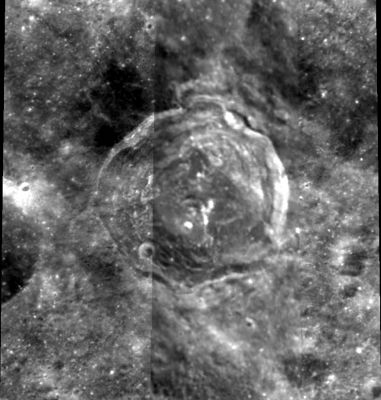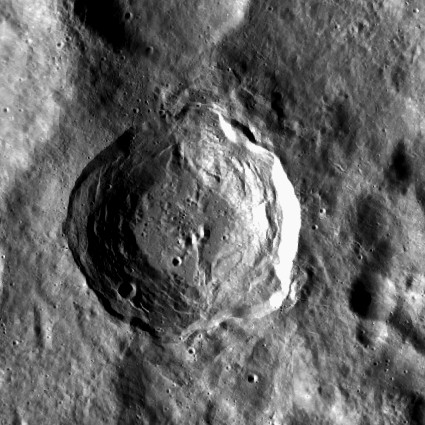Innes
Contents
Innes
|
Lat: 27.8°N, Long: 119.2°E, Diam: 42 km, Depth: km, Rükl: (farside), Eratosthenian |


left: Clementine . right: LROC
Images
LPOD Photo Gallery Lunar Orbiter Images Apollo Images
According to the LPI's Apollo Image Atlas there are very few Apollo photographs which show Innes (only two?).
Apollo 16's Fairchild-camera frame AS16-M-3000 (made during TEC, Trans Earth Coast) shows Innes near the lower part of the frame's right margin.
Research: Danny Caes, with help of page 95 in P.Spudis's and B.Bussey's Clementine Atlas of the Moon (LAC 47).
Maps
(LAC zone 47A3) USGS Digital Atlas PDF
Description
Description: Wikipedia
Additional Information
- TSI = 25, CPI = 15, FI = 20; MI =60 Smith and Hartnell, 1973 (Updated by CAW)
- Bright raycraterlet immediately east of Innes G (east-southeast of Innes itself). Looks like a white spot on page 94 of the Clementine atlas. The extreme close up images of this raycraterlet's interior (its inner slopes and chaotic floor) could be explored at LON: 123.13 / LAT: 26.78 in the LRO's ACT-REACT Quick Map.- DannyCaes Jul 8, 2011
Nomenclature
Robert Thorburn Ayton Innes (November 10, 1861 – March 13, 1933) was a Scottish-South African astronomer best known for discovering Proxima Centauri in 1915, and numerous binary stars. He was also the first astronomer to have seen the Great January Comet of 1910, on January 12.
LPOD Articles
Bibliography